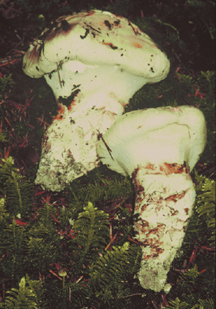

SilviShrooms
Predicting edible mushroom productivity using forest carbon allocation modeling and immunoassays of ectomycorrhizae




Introduction
Edible mushrooms have been harvested from forests for as long as humans have foraged in woodlands, but in the later part of the 20th Century commerce in forest mushrooms became global, and annual international trade is now worth billions of US dollars. A large fraction of this trade is derived from the sporocarps (fruiting-bodies) of fungi that grow symbiotically with trees by forming ectomycorrhizae, a nutrient and water exchange structure consisting of fine tree roots and an enclosing sheath of fungal tissue. Ectomycorrhizal (EM) fungi act as an extended fine root system for trees and, in return, they obtain carbohydrates from host tree photosynthesis. These carbohydrates are one reason that EM fungi can fruit copiously each year if weather is favorable. Depending on the species, sporocarps of EM fungi can be mushrooms that fruit above ground or truffles that fruit below ground.
Well known edible EM fungi include chanterelles, matsutake,
boletes, and truffles. Some edible EM fungi occur in the tropics
and in inoculated plantations in the southern hemisphere, but
most grow in temperate and boreal forests of the northern hemisphere
with tree species in the Pinaceae and Fagaceae. Work is underway
to cultivate edible EM fungi in plantations (Hall
et al. 1998), but inoculation and establishment of most EM
species has proven difficult (Danell
1994). Even if widely cultivated, forest mushrooms are likely
to remain a viable commercial product for the foreseeable future.
The increase in harvesting of forest mushrooms and truffles has
engendered concerns about whether the harvest is sustainable.
Egli et al. (1990) and Norvell
(1995) suggest that picking mushrooms per se has no discernable
impact on subsequent fruiting in small areas over periods of a
decade or two. Pilz and Molina (1998)
have described a three-pronged Regional
Research and Monitoring Program for tracking potential long-term
or broad scale mushroom harvest impacts in the forests of the
Pacific Northwest United States. To date, the monitoring program
has not been implemented, but here we describe in greater detail
our pursuit of the research component of this regional program.